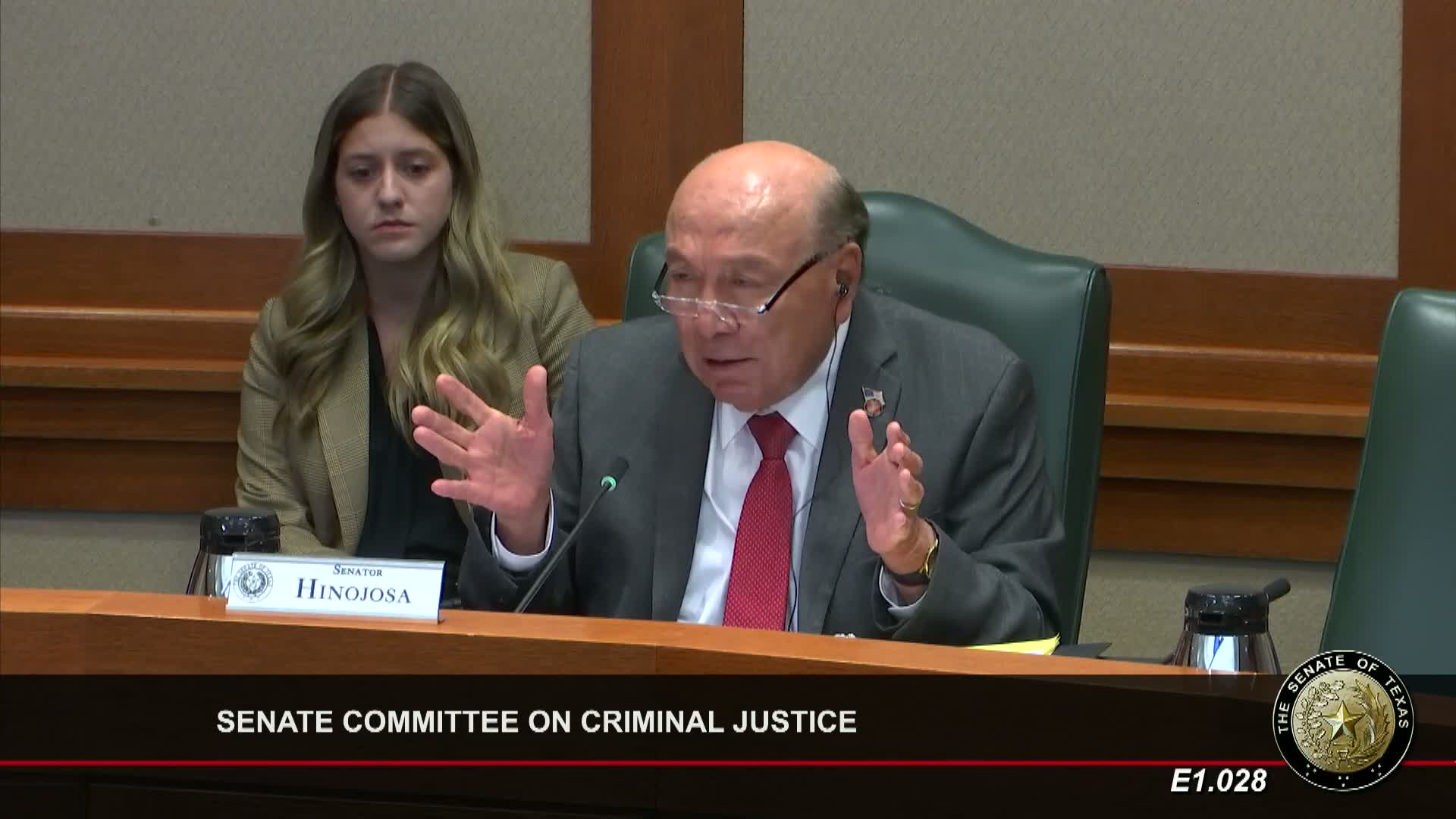International Gangs Exploit Texas with Organized Crime Tactics
October 10, 2024 | Committee on Criminal Justice, Senate, Legislative, Texas
This article was created by AI summarizing key points discussed. AI makes mistakes, so for full details and context, please refer to the video of the full meeting. Please report any errors so we can fix them. Report an error »

In a recent session of the Texas Senate Committee on Criminal Justice, a stark picture emerged of the evolving landscape of organized crime in the state. As committee members gathered to discuss pressing issues, the conversation quickly turned to the alarming rise of international gangs and their intricate operations within Texas.
One committee member highlighted the prevalence of ATM and point-of-sale skimming, a crime that has become increasingly sophisticated. "We read in newspapers about police encounters with these criminals, often linked to international gangs," he noted, emphasizing the seriousness of the issue. The discussion revealed that many of these gangs have connections to Mexican cartels, but the problem extends beyond borders, involving groups from Europe and South America.
The testimony painted a vivid picture of the Romanian gangs, described as highly organized with a structure reminiscent of the infamous crime families of New York. These groups have carved out territories across the United States, continuously shifting their operations to evade law enforcement. Their criminal activities range from retail theft to complex scams involving EBT fraud, which have reportedly cost the state and federal governments millions.
The committee also examined the roles of Cuban and Venezuelan gangs, which, while less organized, still pose significant threats. The Cubans are primarily involved in card skimming and fuel theft, while Venezuelans have been linked to more violent crimes, including homicides related to their criminal enterprises. The testimony underscored a troubling trend: as these gangs grow bolder, their operations are becoming increasingly violent.
As the meeting concluded, it was clear that the challenges posed by these international crime syndicates require urgent attention. The committee's discussions not only shed light on the current state of crime in Texas but also raised critical questions about how law enforcement can adapt to combat these evolving threats. The implications of these findings resonate far beyond the meeting room, signaling a need for a coordinated response to safeguard communities across the state.
One committee member highlighted the prevalence of ATM and point-of-sale skimming, a crime that has become increasingly sophisticated. "We read in newspapers about police encounters with these criminals, often linked to international gangs," he noted, emphasizing the seriousness of the issue. The discussion revealed that many of these gangs have connections to Mexican cartels, but the problem extends beyond borders, involving groups from Europe and South America.
The testimony painted a vivid picture of the Romanian gangs, described as highly organized with a structure reminiscent of the infamous crime families of New York. These groups have carved out territories across the United States, continuously shifting their operations to evade law enforcement. Their criminal activities range from retail theft to complex scams involving EBT fraud, which have reportedly cost the state and federal governments millions.
The committee also examined the roles of Cuban and Venezuelan gangs, which, while less organized, still pose significant threats. The Cubans are primarily involved in card skimming and fuel theft, while Venezuelans have been linked to more violent crimes, including homicides related to their criminal enterprises. The testimony underscored a troubling trend: as these gangs grow bolder, their operations are becoming increasingly violent.
As the meeting concluded, it was clear that the challenges posed by these international crime syndicates require urgent attention. The committee's discussions not only shed light on the current state of crime in Texas but also raised critical questions about how law enforcement can adapt to combat these evolving threats. The implications of these findings resonate far beyond the meeting room, signaling a need for a coordinated response to safeguard communities across the state.
View full meeting
This article is based on a recent meeting—watch the full video and explore the complete transcript for deeper insights into the discussion.
View full meeting
